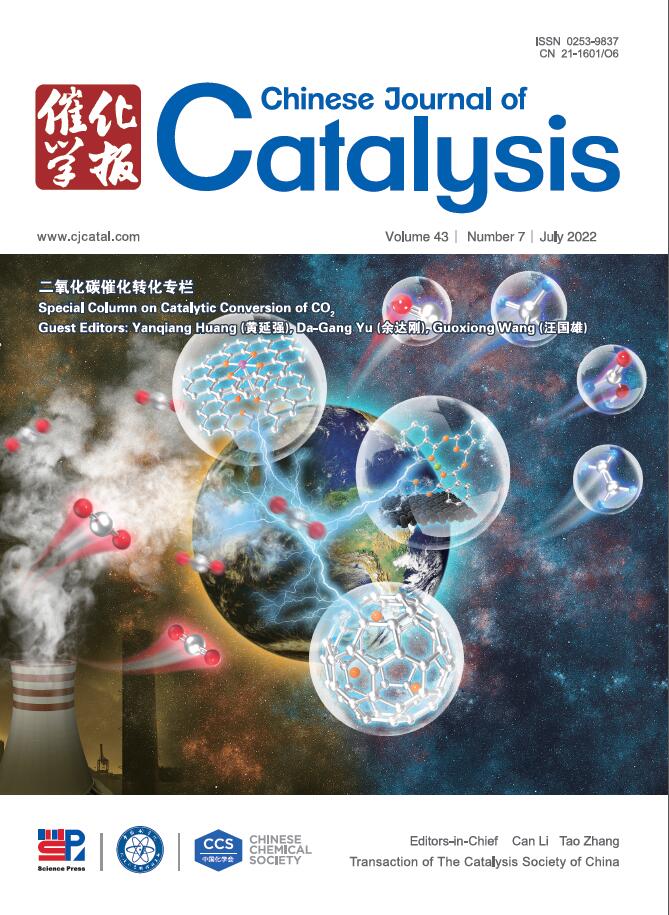重点研究了高温质子交换膜燃料电池中抗磷酸盐中毒的催化剂
IF 15.7
1区 化学
Q1 CHEMISTRY, APPLIED
引用次数: 0
摘要
摘要高温质子交换膜燃料电池(HT-PEMFC)高效电催化剂的研究要求其在阴极氧还原反应(ORR)中具有耐磷酸(PA)中毒的性能。近年来催化剂的研究进展主要集中在通过修饰电子结构或催化界面来减轻磷酸阴离子在pt基催化剂上的吸附和开发具有PA中毒免疫功能的Fe-N-C基催化剂。fe - n - c基催化剂已成为Pt基催化剂的有希望的替代品,为克服磷酸阴离子在Pt上的吸附特性提供了巨大的潜力。对这些发展的概述提供了对催化机制的见解,并有助于设计更高效的催化剂。这篇综述从探索基本的中毒原理开始,然后是用于确定中毒效应潜在机制的表征技术的关键总结。然后将注意力转向旨在通过精心设计的催化剂来提高HT-PEMFC性能的努力。最后,讨论了开发抗pa中毒策略和实用HT-PEMFC的机遇和挑战。通过这些讨论,旨在全面了解pa中毒的瓶颈并启发未来的研究方向。本文章由计算机程序翻译,如有差异,请以英文原文为准。
Focus on the catalysts to resist the phosphate poisoning in high-temperature proton exchange membrane fuel cells
ABSTRACT
Investigating highly effective electrocatalysts for high-temperature proton exchange membrane fuel cells (HT-PEMFC) requires the resistance to phosphate acid (PA) poisoning at cathodic oxygen reduction reaction (ORR). Recent advancements in catalysts have focused on alleviating phosphoric anion adsorption on Pt-based catalysts with modified electronic structure or catalytic interface and developing Fe-N-C based catalysts with immunity of PA poisoning. Fe-N-C-based catalysts have emerged as promising alternatives to Pt-based catalysts, offering significant potential to overcome the characteristic adsorption of phosphate anion on Pt. An overview of these developments provides insights into catalytic mechanisms and facilitates the design of more efficient catalysts. This review begins with an exploration of basic poisoning principles, followed by a critical summary of characterization techniques employed to identified the underlying mechanism of poisoning effect. Attention is then directed to endeavors aimed at enhancing the HT-PEMFC performance by well-designed catalysts. Finally, the opportunities and challenges in developing the anti-PA poisoning strategy and practical HT-PEMFC is discussed. Through these discussions, a comprehensive understanding of PA-poisoning bottlenecks and inspire future research directions is aim to provided.
求助全文
通过发布文献求助,成功后即可免费获取论文全文。
去求助
来源期刊

Chinese Journal of Catalysis
工程技术-工程:化工
CiteScore
25.80
自引率
10.30%
发文量
235
审稿时长
1.2 months
期刊介绍:
The journal covers a broad scope, encompassing new trends in catalysis for applications in energy production, environmental protection, and the preparation of materials, petroleum chemicals, and fine chemicals. It explores the scientific foundation for preparing and activating catalysts of commercial interest, emphasizing representative models.The focus includes spectroscopic methods for structural characterization, especially in situ techniques, as well as new theoretical methods with practical impact in catalysis and catalytic reactions.The journal delves into the relationship between homogeneous and heterogeneous catalysis and includes theoretical studies on the structure and reactivity of catalysts.Additionally, contributions on photocatalysis, biocatalysis, surface science, and catalysis-related chemical kinetics are welcomed.
 求助内容:
求助内容: 应助结果提醒方式:
应助结果提醒方式:


